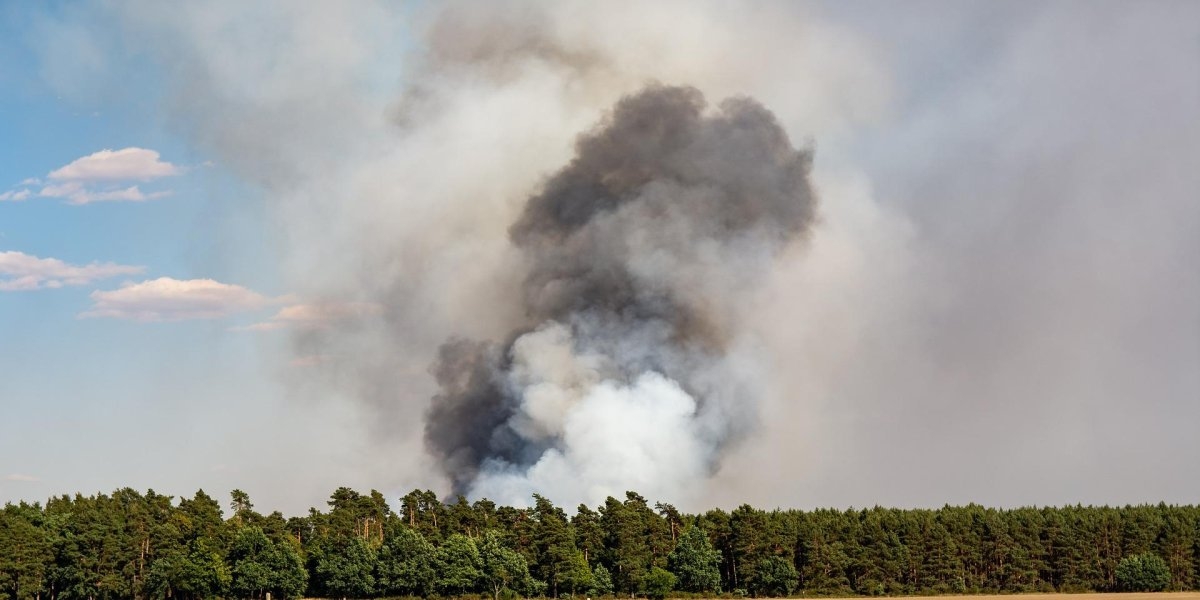Many forest fires are started by lightning strikes, and as a result of increased global warming, there may be more of them in the future. Photo: Sven Lachmann, Pixabay
The more droughts, the more forest fires
Hot summers with more heatwaves and prolonged droughts can mean more forest fires. CICERO researchers are now looking at the risks and impacts of forest fires.
Europe experienced several heatwaves last summer, with temperatures reaching 40 degrees as far north as the UK. And along with the high temperatures came the forest fires. In mid July, the UK experienced 50 grass and forest fires in the space of 48 hours. Portugal reported 100 forest fires in the space of a few days in mid July, and firefighters in Greece, France and Spain also fought to control the flames.
'We have also seen record high heatwaves and a high level of forest fire activity in the Arctic in recent years,' says CICERO researcher Marianne Tronstad Lund, citing the heatwaves in Canada in 2021 and Siberia in 2020 and the summer drought in Scandinavia in 2018. Tronstad Lund heads Norway's contribution to ACRoBEAR, a four-year research project studying forest fires in the Arctic.
'We see connections between climate change, forest fires and health impacts. Climate change affects the weather conditions that increase the risk of forest fires. Fires lead to high levels of particles and ozone in the atmosphere, and harmful levels of air pollution are often registered many places in the vicinity of large forest fires,' she says, adding that they study boreal forests (forests with large numbers of pine trees, like those we have in Norway).
'We look at different levels of global warming: how is the weather-related risk of forest fires changing?’

More lightning strikes
In the far north, it is mostly lightning strikes that ignite fire, but sparks from train tracks and careless use of fire also play a part.
'In far northern areas, including the Arctic, most fires are caused by lightning strikes. Several studies also suggest that there will be an increase in the number of lightning strikes, probably in connection with increased global warming. Along with changes in what we call "fire weather" (high temperatures, low humidity and a lot of wind), these can lead to a higher risk of fires and to more forest fires, even here in the north,' says Tronstad Lund, who goes on to explain that forest fires in themselves are not harmful to the actual forest; on the contrary, they have an important role the natural life cycle of a forest, clearing space for new species of plants and animals.
'Other changes can also contribute to more forest fires in the Arctic. For example, shorter snow seasons prolong the period during which forest fires can occur, and thus can lead to more fires in the course of a season,' says Tronstad Lund.
According to Tronstad Lund, the reasons for the changing nature of forest fires are complex. Weather is the most important natural risk factor, but human factors and vegetation also play a role. Many forest fires around the world are started by careless use of fire. The type of forest and how it is managed also play a role in the extent and severity.
'When I visited California, I was told how important it was to keep the site cleared of old, dry timber to help potential firefighting efforts. The extent of fires can also be checked by planting fire-resistant vegetation and plants and, not least, by informing people about the potential risks involved in lighting a fire.'
Comparing countries with the same forest types
The ACRoBEAR project studies areas in Finland, Sweden, Norway, Siberia, Alaska and central Canada. These areas were selected because they are located at the same latitude and have the same forest types. The researchers look at what weather conditions these areas have in common and whether fire weather will develop differently under increased global warming.
'We see that Canada already has more days with weather that indicates a higher fire risk than in the other five areas. It's also where we see the most significant increase in global warming. Scandinavia has highly variable weather and less noticeable changes, but we find the same thing in all these areas: increased global warming and a growing risk of weather-related fires,' says Tronstad Lund.
